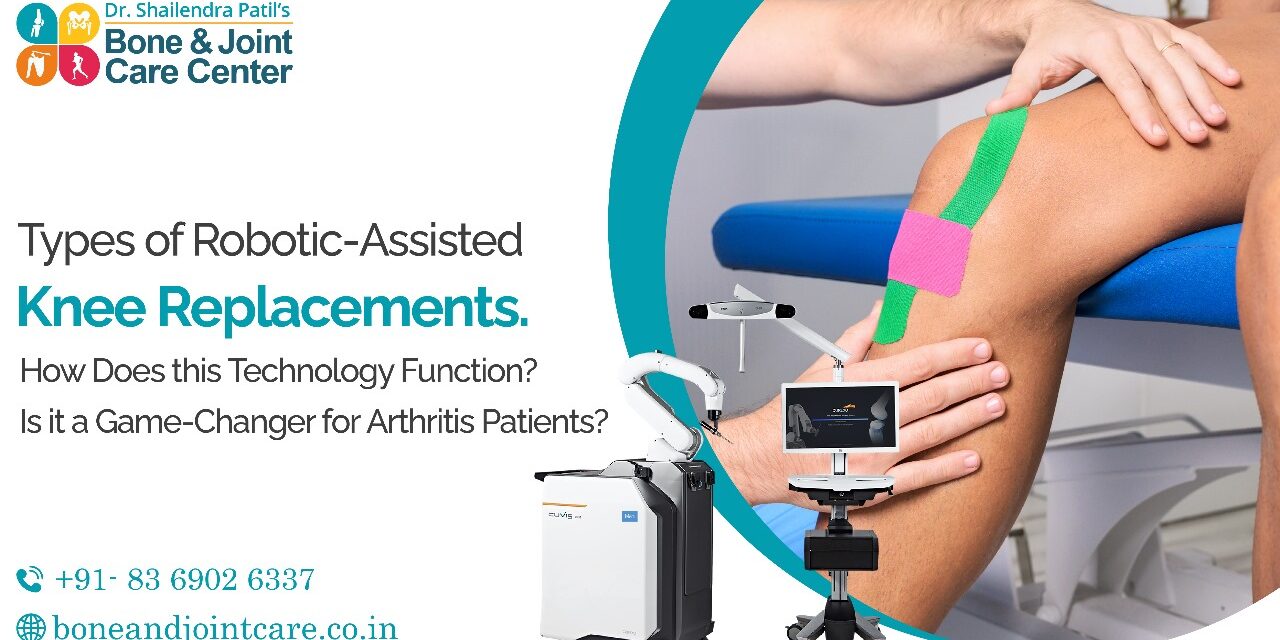Any damage to your knee joint, whether it’s because of arthritis or a severe injury, requires an invasive treatment. How effective the treatment depends on the accuracy of the measurement tools. There’s been an increasing demand for robotic knee replacement in Mumbai, as it offers a greater level of precision and involves a faster recovery.
The procedure is considered taking the patient’s unique anatomy to determine the most viable type of knee replacement surgery personalized to their condition and needs. Let’s see what makes robotic-assisted knee replacement an ideal procedure for joint replacement.
Types of Robot-Assisted Knee Replacement
There are different types and surgical methods used to perform knee replacement surgery. Your healthcare provider will evaluate your medical condition and recommend a procedure that fits your knee anatomy. Common types of robot-assisted knee replacement include:
Total Knee Replacement: In a total knee replacement, the surgeon removes shin bone and thigh bone. Depending on the severity of the case, they might decide to preserve the patella or remove it. The damaged joints are replaced by artificial joints.
Partial Knee Replacement: If only a small portion, usually one side of the knee, is damaged, it can be fixed with partial knee replacement. Since there are fewer parts removed and replaced, partial knee replacement involves a faster recovery and improved joint function.
Kneecap Replacement: A robot-assisted knee replacement surgery can be performed to remove just the undersurface of the kneecap. The surgery is advisable for patients who have arthritis confined to the kneecap, but it often comes with a high failure rate, as there’s a risk of the condition spreading to the rest of the knee joint.
Revision Knee Replacement: A revision knee replacement is necessary if you have severe bone loss due to arthritis or an accident and you undergo multiple knee replacement surgeries on the same knee. You may also need revision surgery if the artificial joints wear away.
Benefits of Robot-Assisted Knee Replacement
Robotic-assisted knee replacement surgery In Mumbai offers many advantages and is certainly better than its traditional open-surgery counterpart. Here’s how it helps.
- Proper placement of the implant
- It offers great precision, as everything is pre-planned according to your CAT scans
- Perfect joint alignment
- Fewer risk of complications and lesser blood loss than a traditional knee replacement surgery
Curious about the advantages of robotic surgery for knee replacement? Dive deeper into the topic to answer the question: Is Robotic Surgery Better for Knee Replacement?
How Does Robotic-Assisted Knee Replacement Work?
Your healthcare provider will create a personalized surgical plan based on your health, existing medical conditions, and the level of damage to your knee joint. The surgeon will order a CAT scan to get 3D images of your knee joint and understand your unique knee anatomy, bone structure, and damaged areas.
The robotic arm uses the images from the CAT scan to target the right areas and the surgeon uses hand-held tools to guide the robotic arm to make precise cuts. The surgery isn’t performed by a robot, though. It’s used as a guiding tool to fit the implants into the target site with minimal damage to the surrounding healthy tissues.
Additionally, as you delve into the details of knee replacement options, consider exploring the advancements in robotic knee replacement surgery – a cutting-edge approach to joint restoration. Here are 7 key insights you should know about Robotic Knee Replacement Surgery.







